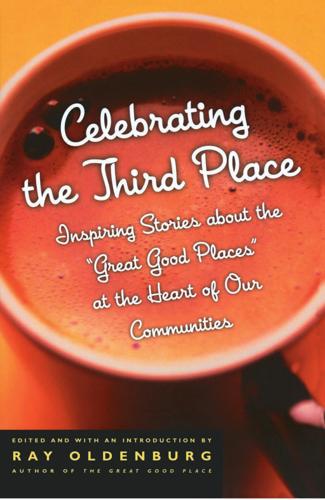
Celebrating the Third Place: Inspiring Stories About the Great Good Places at the Heart of Our Communities
by
Ray Oldenburg
Published 30 Nov 2001
—Booklist “A book that should be read by everyone in North America over the age of 16.” —The World of Beer “ ‘The Great Good Place’ by Ray Oldenburg is a treatise on the ‘third places’ in our lives . . . he makes so much sense. He describes ways to gather back our sense of community.” —The Virginian-Pilot “In his book, Oldenburg . . . captures the essence of a true coffeehouse based on the sidewalk cafes of Paris, English pubs, Viennese coffeehouses, German bier gartens, Japanese teahouses and America’s main street.” —Specialty Coffee Retailer Magazine RAY OLDENBURG Celebrating the Third Place Ray Oldenburg, Ph.D., professor emeritus of sociology at the University of West Florida, coined the term “third place” and is widely recognized as one of the world’s leading advocates for great good places.
…
He is frequently sought after as a media commentator and consultant to entrepreneurs and community and urban planners. He lives in Pensacola, Florida. EDITED AND WITH AN INTRODUCTION BY RAY OLDENBURG Celebrating the Third Place Inspiring Stories About the “Great Good Places” at the Heart of Our Communities MARLOWE & COMPANY NEW YORK CELEBRATING THE THIRD PLACE: Inspiring Stories About the “Great Good Places” at the Heart of Our Communities Copyright © 2001 by Ray Oldenburg Published by Marlowe & Company An Imprint of Avalon Publishing Group Incorporated All rights reserved. No part of this book may be reproduced in whole or in part without written permission from the publisher, except by reviewers who may quote brief excerpts in connection with a review in a newspaper, magazine, or electronic publication; nor may any part of this book be reproduced, stored in a retrieval system, or transmitted in any form or by any means electronic, mechanical, photocopying, recording, or other, without written permission from the publisher.
…
What lures customers to Annie’s when competitors like Agway and Wal-Mart are within five minutes’ drive? Established independent garden centers are equally close, and specialty growers are ten minutes away. Just as you might ask, What’s special about a Fred’s hot dog, you might also ask, What’s special about Annie’s? Ray Oldenburg, in his book The Great Good Place, describes characteristics of places like Fred’s and Annie’s. They are on neutral ground, welcome all people, are accessible, modest, and playful. Customers develop a sense of ownership for the places, feel restored, at ease and rooted there, and regulars talk freely about their lives, their community, and the world.
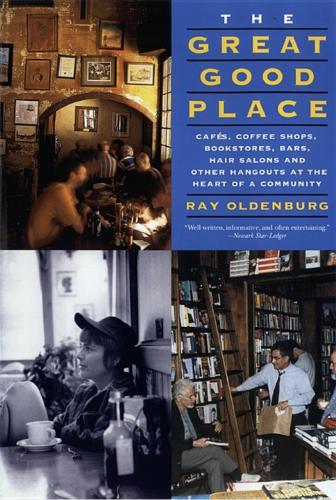
The Great Good Place: Cafes, Coffee Shops, Bookstores, Bars, Hair Salons, and Other Hangouts at the Heart of a Community
by
Ray Oldenburg
Published 17 Aug 1999
Acclaim for Ray Oldenburg and The Great Good Place “Ray Oldenburg is inspirational. He is the first to recognize and articulate the importance of the greeting place (third place) for the well-being of the individual and society at large.” —Ron Sher, President, Terranomics Development and founder, Third Place Books, Seattle, Washington “A day doesn’t go by that I don’t refer to Ray Oldenburg’s The Great Good Place. At a time when all great, good independent bookstores everywhere are under siege, we’re fortunate that Mr. Oldenburg has articulated our message so clearly.” —Mitchell Kaplan, owner, Books & Books, Miami, Florida “The Great Good Place has put into words and focus what I’ve been doing all my life, from the barbershop I remember as a child to the bookstore I now own.
…
Photo © Lynne Breaux At Tunnicliff’s Tavern on Capitol Hill in Washington, D.C., proprietor Lynne Breaux carries on a tradition of hospitality begun in 1796, when William Tunnicliff opened the Eastern Branch Hotel. “Tunnicliff’s is a great, good place,” Breaux says. “It is where politicians, poets, and people of all ages, occupations and cultures converse and celebrate.” Pictured here is a recent weekend celebration. Photo © Ray Oldenburg Author Ray Oldenburg (center) at his own local great good place. In 1996, Tracy and Steve Spracklen opened their Good Neighbor Coffee Shop in Pensacola, Florida, not knowing that the author of The Great Good Place, a book that had inspired them, lived in town. Here is the author at the Good Neighbor Coffee Shop having his weekly “Coffee with the Cops.”
…
—Mitchell Kaplan, owner, Books & Books, Miami, Florida “The Great Good Place has put into words and focus what I’ve been doing all my life, from the barbershop I remember as a child to the bookstore I now own. My goal at Horizon Books is to provide that third place in which people can “hang out.” Ray Oldenburg has defined those good places while still recognizing the magical chemistry they require. The Great Good Place is a book to read, to recommend, and to quote.” —Victor W. Herman, owner, Horizon Books, with locations in Traverse City, Petoskey, and Cadillac, Michigan “The great value of this book is that Mr. Oldenburg has given us an insightful and extremely useful new lens through which to look at a familiar problem. . .”
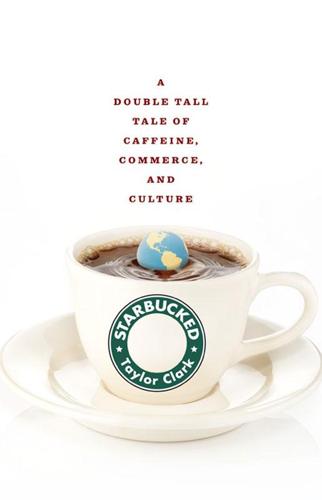
Starbucked: A Double Tall Tale of Caffeine, Commerce, and Culture
by
Taylor Clark
Published 5 Nov 2007
The perfect catchphrase for the coffee-house’s vital social function happened to be languishing in disuse, just waiting for someone to seize on it. When Harry Roberts found himself struggling to put the communal appeal of Starbucks into words, he shared his trouble with his wife, who soon stumbled across the solution in a bookstore: an out-of-print book called The Great Good Place, by a sociology professor named Ray Oldenburg. In his book, Oldenburg describes America’s need for the neutral, safe, public gathering spots that had gradually disappeared; he calls this nexus the “third place,” with home and work being places one and two. His words were eerily prescient — he even pointed out that third places generally revolve around beverages, like with tea-houses and pubs.
…
His words were eerily prescient — he even pointed out that third places generally revolve around beverages, like with tea-houses and pubs. As Schultz might have said, the synergy was too good to be true. The company now had its philanthropic rallying cry: it wasn’t a coffee company, but a third place bringing people together through the social glue of coffee. And who could disagree? Well, Ray Oldenburg, for one. Now retired, Oldenburg is grateful for the renewed attention that Starbucks brought to his third-place idea, but he remains displeased that the company co-opted his concept. “It was a little tacky of them not to consult me,” he told me. * Oldenburg’s idea of a third place was actually of a calmer, mom-and-pop establishment without Starbucks’s high volume and fast turnover.
…
A sparkling Starbucks store can also make a historically bleak place seem that much more livable — to the point where real estate agents in Hyde Park, on Chicago’s South Side, include the distance to a new Starbucks in their home listings. Arthur Rubinfeld boasted to me of having received stacks of letters from thankful homeowners who credit a nearby Starbucks with boosting long-stagnant property values. Even Ray Oldenburg, the father of the “third place” idea who later refused to endorse the chain, offered surprising praise for Starbucks’s ability to help revitalize a depressed town. “To their credit, they brought Naperville [Illinois] back to life single-handedly, and now it’s one of the five most livable cities in the country,” he said.

Because Internet: Understanding the New Rules of Language
by
Gretchen McCulloch
Published 22 Jul 2019
Georgetown University Press. pp. 119–132. idea of a third place: Matthew Dollinger. June 11, 2008. “Starbucks, ‘The Third Place,’ and Creating the Ultimate Customer Experience.” Fast Company. www.fastcompany.com/887990/starbucks-third-place-and-creating-ultimate-customer-experience. What Ray Oldenburg: Ray Oldenburg. 1989. The Great Good Place: Cafes, Coffee Shops, Community Centers, Beauty Parlors, General Stores, Bars, Hangouts, and How They Get You Through the Day. Paragon House. Examples include pubs: Leo W. Jeffres, Cheryl C. Bracken, Guowei Jian, and Mary F. Casey. 2009. “The Impact of Third Places on Community Quality of Life.”
…
But to send someone a message, you need to find them first, and for that, you need some sort of shared space that several people can drop in on. The idea of a third place is often invoked to explain the appeal of Starbucks: the first place is home, the second place is work, but people also need a third place to socialize that’s neither home nor work, like a coffeeshop. What Ray Oldenburg, the sociologist who coined the term in a 1989 book called The Great Good Place, had in mind was something more specific than just any convenient spot where you might stop by for a cup of joe. Oldenburg’s third places are first of all social centers, distinguished by an emphasis on conversation and playfulness, regular attendees who set the tone for newcomers, the freedom to come and go as you please, a lack of formal membership requirements, and a warm, unpretentious feeling of home away from home.
…
The Atlantic. www.theatlantic.com/technology/archive/2016/08/cameras-with-constraints/494291/. Ian Bogost. May 3, 2018. “Why ‘Stories’ Took Over Your Smartphone.” The Atlantic. www.theatlantic.com/technology/archive/2018/05/smartphone-stories-snapchat-instagram-facebook/559517/. “Third place conversation”: Ray Oldenburg. 1989. The Great Good Place: Cafes, Coffee Shops, Community Centers, Beauty Parlors, General Stores, Bars, Hangouts, and How They Get You Through the Day. Paragon House. Popular email lists: (No author cited.) January 7, 2000. “Mailing List History.” Living Internet. www.livinginternet.com/l/li.htm.

Palaces for the People: How Social Infrastructure Can Help Fight Inequality, Polarization, and the Decline of Civic Life
by
Eric Klinenberg
Published 10 Sep 2018
Community organizations, including churches and civic associations, act as social infrastructures when they have an established physical space where people can assemble, as do regularly scheduled markets for food, furniture, clothing, art, and other consumer goods. Commercial establishments can also be important parts of the social infrastructure, particularly when they operate as what the sociologist Ray Oldenburg called “third spaces,” places (like cafés, diners, barbershops, and bookstores) where people are welcome to congregate and linger regardless of what they’ve purchased. Entrepreneurs typically start these kinds of businesses because they want to generate income. But in the process, as close observers of the city such as Jane Jacobs and the Yale ethnographer Elijah Anderson have discovered, they help produce the material foundations for social life.
…
The variation suggests that gentrification plays out differently depending on the local context, and also that groups are likely to be affected by gentrification in divergent ways. In all neighborhoods, though, commercial establishments are important parts of the social infrastructure. As Jane Jacobs and Ray Oldenburg famously argued, grocery stores, diners, cafés, bookstores, and barbershops draw people out of their homes and into the streets and sidewalks, where they create cultural vitality and contribute to the passive surveillance of shared public space. When I did research in Chicago, I discovered that poor neighborhoods with active retail corridors were surprisingly resilient during the devastating heat wave, because people who lived in them could easily go out and get air-conditioning or support from neighbors.
…
largest and most heterogeneous public space: Stéphane Tonnelat and William Kornblum, International Express: New Yorkers on the 7 Train (New York: Columbia University Press, 2017). “participator rather than spectator”: MassObservation, The Pub and the People (1943; repr., London: Cresset Library, 1987), 17. people in public can feel like they’re at home: Ray Oldenburg, The Great Good Place: Cafés, Coffee Shops, Bookstores, Bars, Hair Salons and Other Hangouts at the Heart of a Community (Cambridge, MA: Da Capo Press, 1989). the air that pedestrians breathe a little cleaner: See Vanessa Quirk, “The 4 Coolest ‘High Line’ Inspired Projects,” ArchDaily, July 16, 2012, https://www.archdaily.com/254447/the-4-coolest-high-line-inspired-projects.

The Coffee Book: Anatomy of an Industry From Crop to the Last Drop
by
Gregory Dicum
and
Nina Luttinger
Published 1 Jan 1999
Now that they are older, some find that bars are too noisy and raucous and threatening for companionship. So they hang out in cafés and coffee bars. The music is quiet enough to allow conversation. The places are well-lit. No one is carded, and no one is drunk.4 Schultz makes much of the “Third Place,” a term coined by the sociologist Ray Oldenburg to describe the non-home, non-work environment that had once been the forum for public life but that had almost disappeared under the postwar regime of highly regimented schedules, commuter life, and television. This had clearly been the role of the old coffeehouses in Europe and had been present in America in the form of neighborhood gathering places such as bars and coffee shops.
…
Slywotzky and Kevin Mundt, “Hold the Sugar; Starbucks Corp.’s Business Success,” Across the Board, September 1996, 39. 2 Specialty Coffee Association of America and National Coffee Association, personal interviews, October 2005. 3 Information Resources, Inc., 2004. 4 Howard Schultz and Dori Jones Yang, Pour Your Heart into It: How Starbucks Built a Company One Cup at a Time (New York: Hyperion, 1997), 120–21. 5 Ray Oldenburg, The Great Good Place (New York: Paragon House, 1989), 296. 6 Faith Popcorn, The Popcorn Report (New York: HarperBusiness, 1992), 39–40. 7 Unscrupulous blending has also had a hand in this travesty—mixing a little genuine Kona into a Central American blend and calling it “Kona” or “Kona Blend.” 8 The growth of the specialty coffee industry has also helped cultivate a rising demand for specialty teas, which, like coffees, focus on distinguishing themselves based on origin, cultivation, processing, and blending techniques.
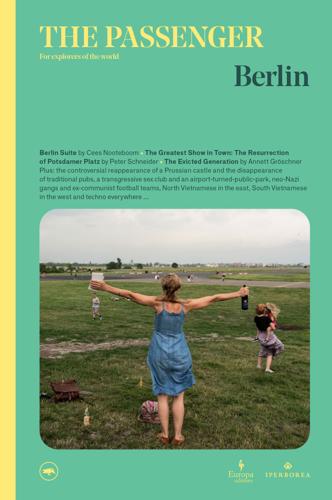
The Passenger: Berlin
by
The Passenger
Published 8 Jun 2021
All the literature makes it clear that a Kneipe is more than just a pub, by emphasising its social function: the idea of ‘being close together’ in the word’s original meaning, to people searching for a place for ‘social reasons’, as Der Spiegel noted, to notions associated with the sense of ‘belonging and not belonging’, as Füsers has written. A place where society’s members can meet casually or by chance. An agora with beer. What the sociologist Ray Oldenburg calls a ‘third place’ and which, as such, can be compared with the bistro as Augé describes it and as I experienced it: a place that stands between one’s home and workplace. A meeting place, like a park, café, library, museum, church or bookshop. Oldenburg characterises this space as beneficial or free.
…
When we look at other places – such as shisha cafés, gay bars and Turkish tearooms – from this perspective, we see how much the notion of the subculture-specific establishment is shaping Berlin. Such spaces enrich the city and make it more interesting, but they do not encourage mixing and equality; they are not ‘unconditional’ spaces, as per Ray Oldenburg’s third spaces, and they are not spaces for the ‘mingling of the species’, as in Marc Augé’s descriptions of bistros. THE HOBRECHT PLAN As in many 19th-century European cities, Berlin had its own urban development plan. Named after its creator, James Hobrecht, it sought to reorganise the city in a more modern manner.
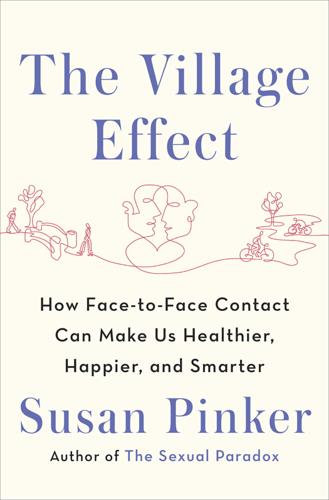
The Village Effect: How Face-To-Face Contact Can Make Us Healthier, Happier, and Smarter
by
Susan Pinker
Published 30 Sep 2013
Leary, “The Need to Belong: Desire for Interpersonal Attachments as a Fundamental Human Motivation,” Psychological Bulletin 117 (1995); David G. Myers, “Close Relationships and Quality of Life,” in Well-being, ed. Kahneman, Diener, and Schwarz. 8. For more about the characteristics of “third places,” see Ray Oldenburg, The Great Good Place: Cafes, Coffee Shops, Community Centers, Beauty Parlors, General Stores, Bars, Hangouts, and How They Get You Through the Day (New York: Paragon, 1989); Ray Oldenburg, Celebrating the Third Place: Inspiring Stories about the “Great Good Places” at the Heart of Our Communities (New York: Marlowe, 2000). Thanks are due to my brother Steve for introducing me to the term meatspace. 9.
…
Principle 1 Live in a community where you know and talk to your neighbors. Making Tradeoffs The digital revolution, like the automotive revolution that preceded it, has enhanced society in countless ways. But it has also had unintended consequences. Many of the hangouts where people used to meet (which sociologist Ray Oldenburg called third places and techies call meatspaces) are disappearing.8 And given the impact of less social contact on people’s health and morale, not to mention on the bottom line, it’s no wonder that employers such as Yahoo and Bank of America are calling their remote workers back to the office.
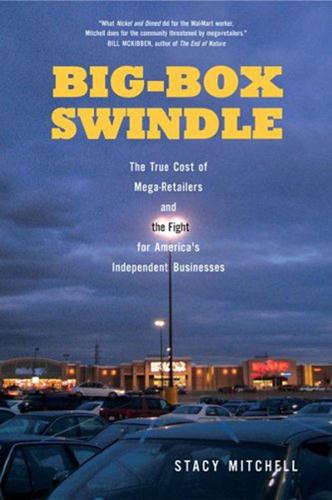
Stacy Mitchell
by
Big-Box Swindle The True Cost of Mega-Retailers
and
the Fight for America's Independent Businesses (2006)
On the same basement level as the video store is Anthony’s Italian Kitchen, another good local hangout, and Bull Moose Music, where many residents make weekly pilgrimages to check out new releases and flip through the bins of newly arrived used CDs. Upstairs is Casco Bay Books, a bookstore café that is a favorite place to lounge, and, across the hall, Casablanca Comics, which serves as a second home to a crowd of comic book aficionados. This cluster of local businesses constitutes what sociologist Ray Oldenburg has dubbed a “third place”—a place where people can put aside the concerns of home and work (the first and second places) and find good company and lively conversation among their neighbors. Third places are the bars, coƒeehouses, bookstores, and barber shops at the heart of a community’s informal public life, its social vitality and democratic spirit.
…
Chuck D’Aprix contributed valuable research to the final chapter. Like all books, this one is built on the work of many other writers, including Joanna Blythman, Barbara Ehrenreich, Liza Featherstone, Thom Hartmann, Jane Jacobs, Marjorie Kelly, David Korten, James Howard Kunstler, Greg LeRoy, David Morris, Al Norman, Ray Oldenburg, Eric Schlosser, E. F. Schumacher, and Michael Shuman. I want to thank David Korten, who first suggested I write this book. My agent, Anna Ghosh, was wonderfully enthusiastic about this project and found a great home for it in Beacon Press, which has been independently publishing books for more than 150 years.
…
Jack Gold, interview, Oct. 4, 2005; John McGettrick, cochair of the Red Hook Civic Association, interview, Sept. 18, 2005; Margaret Foster, “To Clear Site for Home Depot, Owner Illegally Demolishes Nashville House,” Preservation Magazine, Oct. 5, 2005. 27. Store counts from Starbucks.com; Brad Wong, “Great Wall Breached: Starbucks Sets Up Shop,” Seattle Post-Intelligencer, Sept. 22, 2005. 28. Ray Oldenburg, The Great Good Place: Cafes, Coƒee Shops, Bookstores, Bars, Hair Salons, and Other Hangouts at the Heart of Community, 2nd ed. (New York: Marlowe & Company, 1999). 29. Ibid., 21–85; 70. 30. Hollie Lund, “Testing the Claims of New Urbanism: Local Access, Pedestrian Travel, and Neighboring Behaviors,” Journal of the American Planning Association, Sept. 22, 2003, 414–29. 31.

Affluenza: The All-Consuming Epidemic
by
John de Graaf
,
David Wann
,
Thomas H Naylor
and
David Horsey
Published 1 Jan 2001
Will Disney hire extras to play the roles of other suburbanites who can’t drive—elderly, disabled, and low-income residents, peeking out from behind living-room curtains? BOWLING ALONE Where can America’s stranded nondrivers go, in today’s world? There’s no colorful cafô down the block, or bowling alley or tavern, where neighbors can “be apart together, and mutually withdraw from the world,” in the words of writer Ray Oldenburg.1 Such “great good places” or “third places,” that are apart from both home and work environments, are now often illegal—violations of zoning codes. The truth is, the term “community life” is perceived as archaic in a world so dominated by business and government. “We’ve mutated from citizens to consumers in the last sixty years,” says James Kuntsler, the author of The Geography of Nowhere.
…
Alex Molnar in discussion with John de Graaf, April 1996. 13. Interview with psychologist David Elkind, October 1993. 14. David Korten, The Post-Corporate World: Life after Capitalism (San Francisco: Kumarian/Berrett-Koehler, 2000), 33. 15. Jennifer Gailus in discussion with John de Graaf, May 1996. CHAPTER 8 1. Ray Oldenburg, The Great Good Place: Cafes, Coffee Shops, Bookstores, Bars, Hair Salons, and Other Hangouts at the Heart of a Community (New York: Paragon House, 1989), xv. 2. James Kuntsler in discussion with David Wann, March 1997. 3. Robert Putnam, Bowling Alone: The Collapse and Revival of American Community (New York: Simon & Schuster, 2000), 49. 4.
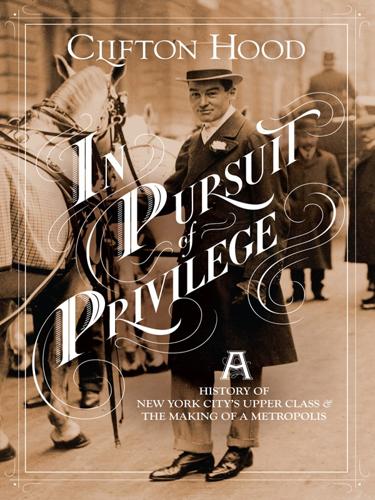
In Pursuit of Privilege: A History of New York City's Upper Class and the Making of a Metropolis
by
Clifton Hood
Published 1 Nov 2016
Livingston, Philip Livingston, and William Walton on its membership rolls. Early social libraries were a space apart from both work and home—semiprivate, membership-only institutions that one historian says served as “a place to converse as well as read, to debate publicly as well as study quietly.”66 These voluntary societies were “third places,” Ray Oldenburg’s phrase for “a great variety of public places that host the regular, voluntary, informal and happily anticipated gatherings of individuals beyond the realms of home and work.”67 In the eighteenth century, third places validated the sophisticated tastes of their upper-class patrons and preserved their exclusivity by recruiting members through friendship and family networks.
…
Adam Arenson, “Libraries in Public Before the Age of Public Libraries: Interpreting the Furnishings and Design of Athenaeums and Other ‘Social Libraries,’ 1800–1860,” 41, in The Library as Place: History, Community, and Culture, ed. John E. Buschman and Gloria J. Leckie (Westport, Conn.: Libraries Unlimited, 2006). 67. Ray Oldenburg, The Great Good Place: Cafés, Coffee Shops, Community Centers, Beauty Parlors, General Stores, Bars, Hangouts, and How They Get You Through the Day (New York: Paragon House, 1989), 16. 68. Laura Lewison, “Lawn Bowling,” 724, in Jackson, Encyclopedia of New York City; Steven A. Reiss, “Horse Racing,” 611–12, in Jackson, The Encyclopedia of New York City; Austin Baxter Keep, History of the New York Society Library (New York: De Vinne, 1908), 123–78; Walter Friedman, “Scots,” 1160–61, in Jackson, The Encyclopedia of New York City; Burrows and Wallace, Gotham, 172–75, 248; New York Gazette (Weyman’s), February 23, 1761, June 6, 1763, November 28, 1763; New York Mercury, May 5, 1755; and Singleton, Social New York, 40–45. 69.
…
(New York: n.p., 1889), 31–32; Constitution, By-Laws, and Rules of the Harvard Club of New York City with List of Officers and Members (New York: n.p., 1888), 24–27; Officers, Members, Constitution and By-Laws of the Union Club, 96–98; Porzelt, Metropolitan Club, 57–104; New York Times, February 12, 1886, February 13, 1890, September 6, 1891, February 25, 1894, May 9, 1897; Louise L. Stevenson, The Victorian Homefront: American Thought and Culture, 1860–1880 (Ithaca, N.Y.: Cornell University Press, 1991), xxiii–xxxv; Jane Tompkins, West of Everything: The Inner Life of the Westerns (New York: Oxford University Press, 1992), 3–19, 43; and Ray Oldenburg, The Great Good Place: Cafés, Coffee Shops, Community Centers, Beauty Parlors, General Stores, Bars, Hangouts, and How They Get You Through the Day, 1st ed. (New York: Paragon, 1989), 16. 63. New York Times, June 17 and 18, 1924, March 4, 1928, October 8, 1949; Harper S. Mott Diary, 1886, entries for May 3 and 5, 1886, Library of the New-York Historical Society, New York, N.Y.
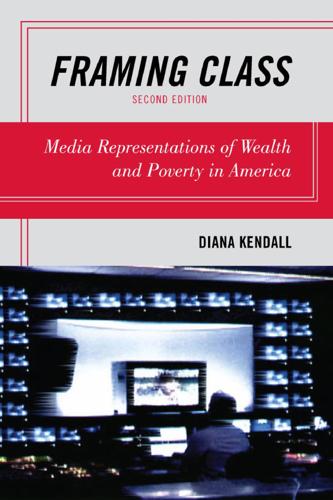
Framing Class: Media Representations of Wealth and Poverty in America
by
Diana Elizabeth Kendall
Published 27 Jul 2005
By seeking out “third places”—locations where people gather and often end up talking about things that are important to them—journalists can find other voices, hear different stories, and perhaps learn more about people from diverse backgrounds and what they are actually thinking and experiencing.42 According to sociologist Ray Oldenburg, the term third place describes “a great variety of public places that host the regular, voluntary, informal, and happily anticipated gatherings of individuals beyond the realms of home and work.”43 If the first place is the home, and the second place is the work setting, then the third place includes churches, community centers, cafes, coffee shops, bookstores, bars, and other spots where people gather informally.
…
id=97 (accessed July 3, 2004). 40. Richard Harwood, “Framing a Story: What’s It Really About?” Pew Center for Civic Journalism, 2004, http://www.pewcenter.org/doingcj/videos/framing.html (accessed July 3, 2004). 41. Smith, “Developing New Reflexes in Framing Stories.” 42. “Finding Third Places.” 43. Ray Oldenburg, The Great Good Place: Cafés, Coffee Shops, Bookstores, Bars, Hair Salons and Other Hangouts at the Heart of a Community (New York: Marlowe, 1999), 16. 44. “The State of the News Media 2004,” Committee of Concerned Journalists, http://www.journalism.org (accessed June 17, 2004). 45. Mantsios, “Media Magic,” 108. 9781442202238.print.indb 262 2/10/11 10:47 AM Notes to Pages 228–229 263 46.
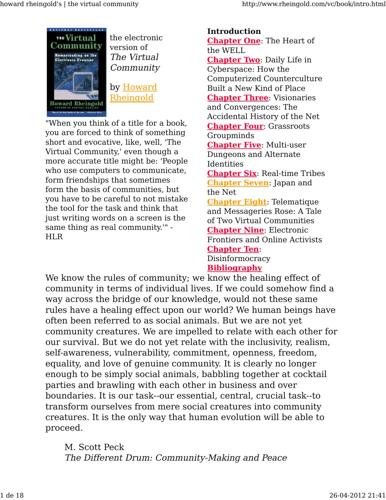
Howard Rheingold
by
The Virtual Community Homesteading on the Electronic Frontier-Perseus Books (1993)
Published 26 Apr 2012
Participating in a virtual community has not solved all of life's problems for me, but it has served as an aid, a comfort, and an inspiration at times; at other times, it has been like an endless, ugly, long-simmering family brawl. I've changed my mind about a lot of aspects of the WELL over the years, but the sense of place is still as strong as ever. As Ray Oldenburg proposed in The Great Good Place, there are three essential places in people's lives : the place we live, the place we work, and the place we gather for conviviality. Although the casual conversation that takes place in cafes, beauty shops, pubs, and town squares is universally considered to be trivial, idle talk, Oldenburg makes the case that such places are where communities can come into being and continue to hold together.
…
One premise behind going to the trouble of adding a video channel to group communication is that it can stimulate the kind of informal, serendipitous conversation that takes place in the hallway or at the coffee machine, but in such a way that the informal space extends to wherever your colleagues are located. In a sense, they are trying to synthesize what sociologist Ray Oldenburg calls "informal public spaces." Another recent Xerox experiment linked a wall-sized monitor in a common room in the Palo Alto laboratory with a common room in a sister laboratory in Oregon. People in Oregon could walk down the hall in the material world, notice on the monitor that you are in the California half of the common room, and engage you in conversation.

The Lonely Century: How Isolation Imperils Our Future
by
Noreena Hertz
Published 13 May 2020
Think of the corner shops in Victorian England, whose practice of providing goods on credit to locals served as a lifeline for many between paydays.23 Or how, since the turn of the nineteenth century, barber shops have provided sanctuary for many African Americans, serving as places not only to get haircuts but also community spaces where men gather to play chess and dominoes, whilst also discussing politics and local affairs.24 Some local businesses even become what sociologist Ray Oldenburg called, in his 1989 book The Great Good Place, ‘third places’: neither home, nor work, but rather gathering spaces abuzz with conversation where regulars meet up and people of different social and economic backgrounds interact, form bonds, exchange ideas and share opinions. These are places where, as Oldenburg wrote, ‘we all feel at home and comfortable’.25 They play critical roles in maintaining our social fabric because they are places where we can practise community and democracy, in their most inclusive form – places where, as in a book club, people may bring wildly different world views and lived experiences that must be reconciled, calibrated, understood and discussed in order for the space to thrive.
…
See for example Randall Collins, ‘Interaction Rituals and the New Electronic Media’, The Sociological Eye, 25 January 2015, https://sociological-eye.blogspot.com/2011/01/interaction-rituals-and-new-electronic.html. 23 Charles Walter Masters, The Respectability of Late Victorian Workers: A Case Study of York, 1867–1914 (Cambridge Scholars Publishing, 2010). 24 National Museum of African American History & Culture, ‘The Community Roles of the Barber Shop and Beauty Salon,’ 2019, https://nmaahc.si.edu/blog/community-roles-barber-shop-and-beauty-salon. 25 Ray Oldenburg, The Great Good Place (Da Capo Press, 1999), p.22. Note that the ‘universal’ accessibility of such ‘third places’ is itself an idealistic assumption that does not necessarily take into account barriers that have been widely exposed since Oldenburg first wrote, such as the racism that has routinely rendered these same ‘third places’ uncomfortable and/or inaccessible to people of colour.

Retrofitting Suburbia, Updated Edition: Urban Design Solutions for Redesigning Suburbs
by
Ellen Dunham-Jones
and
June Williamson
Published 23 Mar 2011
What strategies are designers using to retrofit these ubiquitous and generic properties into place-specific amenities with community-building potential? Figure 4–1 The conversion of rural to urban land: a sample from Gwinnett County, Georgia, between 1930 and 2000. THIRD PLACES IN SUBURBIA? What is a great, good place? Sociologist Ray Oldenburg uses this term to describe neighborhood gathering places where local people routinely hang out and socialize.1 Common examples include the corner pub, diner, coffee shop, barbershop or hair salon, and even at times the hardware or general store. Oldenburg argues that as hosts to informal clubs where social bonds and networks are reinforced, these places serve a fundamental role in building community.
…
Kelly, Expanding the American Dream: Building and Rebuilding Levittown (Albany: State University of New York Press, 1993), 104–1 18. 18 See Renee Chow, Suburban Space: The Fabric of Dwelling (Berkeley and Los Angeles: University of California Press, 2002). 19 Brenda Case Scheer, “The Anatomy of Sprawl,” Places 14:2 (Fall 2001): 28–37. 20 HNTB with Economic Research Associates. 21 Denise Rose, interview. 22 Anne Moudon and Paul Hess, “Suburban Clusters: The Nucleation of Multifamily Housing in Suburban Areas of the Central Puget Sound,” Journal of the American Planning Association 66, no. 3 (Summer 2000): 243–264; observations in Levittown by June Williamson, October 8, 2004. 23 Whyte, The Organization Man. 24 Observations in Park Forest by June Williamson, June 24, 2004. 25 Geoff Mulvihill, “New Numbers: International Migration Is Driving Growth in NJ,” Associated Press, April 9, 2004. 26 James Barron, “A Classic Suburb Feels Graying Pains,” New York Times, July 21, 1983. 27 The award is from the American Institute of Architects Committee on the Environment. The library’s architect is Croxton Collaborative of New York, experts in green building. 28 Linda Saslow, “Nation’s ‘First Suburb’ Aims to Be Most ’Green.’” Chapter 4 1 Ray Oldenburg, The Great Good Place: Cafés, Coffee Shops, Community Centers, Beauty Parlors, General Stores, Bars, Hangouts, and How They Get You through the Day (New York: Marlowe, 1997), and Celebrating the Third Place: Inspiring Stories about the “Great Good Places” at the Heart of our Communities (New York: Marlowe, 2001). 2 Other sociologists have begun correlating the significance of third places with higher rates of civic engagement and positive socioeconomic outcomes, arguing that local differentiations between places factor more than ever in a global capitalist system.
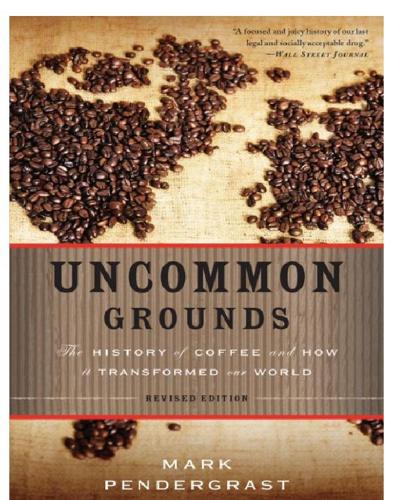
Uncommon Grounds: The History of Coffee and How It Transformed Our World
by
Mark Pendergrast
Published 2 Jan 2000
Indeed, Schultz appeared to be a master image builder. As he himself has said, “My story is as much one of perseverance and drive as it is of talent and luck. I willed it to happen. I took my life in my hands, learned from anyone I could, grabbed what opportunity I could, and molded my success step by step.” In 1989 the sociologist Ray Oldenburg published The Great, Good Place, a lament over the passing of community meeting places like the old country store or soda fountain. The book contained an entire chapter on coffeehouses, concluding: “The survival of the coffeehouse depends upon its ability to meet present day needs and not those of a romanticized past.”
…
Kindleberger; The Boston Tea Party (1964), by Benjamin Woods Labaree; The Fifties (1977), by Douglas T. Miller and Marion Nowak; The New Winter Soldiers (1996), by Richard R. Moser; The Sugar Trust (1964), by Jack Simpson Mullins; Fighting Liberal (1945), by George W. Norris; The Great Good Place (1989), by Ray Oldenburg; The Early English Coffee House (1893), by Edward Robinson; We Say No to Your War (1994), by Jeff Richard Schutts; Hard Times (1970), by Studs Terkel; History and Reminiscences of Lower Wall Street and Vicinity (1914), by Abram Wakeman; The Life of Billy Yank (1952), by Bell Irvin Wiley. On shade-grown coffee and migratory birds: Birds Over Troubled Waters (1991), by Russell Greenbeg and Susan Lumpkin; Proceedings, Memorias: 1st Sustainable Coffee Congress (1997), edited by Robert A.

The Purpose Economy: How Your Desire for Impact, Personal Growth and Community Is Changing the World
by
Aaron Hurst
Published 31 Aug 2013
Erik Hurst, Bob Epstein and Nicole Lederer, Ryan Gravel, Cathy Woolard, Tom Cousins, Ben Cohen and Jerry Greenfield, Craig Jelinek, Bernie Glassman, Juliet Ellis, Freelancers Union, Paul Rice, Charles Montgomery, Jacob Wood & William McNulty, Jennifer Pahlka, Melinda Gates, Jeffrey Stewart, Indra Nooyi, Ryan Howard, Dr. Risa Lavizzo-Mourey, Steve Ells, Ray Oldenburg, Vivek Kundra, Tony Hsieh, Brian Chesky, Joe Gebbia and Nathan Blecharczyk, John Tolva, Rob Spiro and Alon Salant, Yancey Strickler, Charles Adler, Perry Chen, Meg Garlinghouse, Mitchell Baker, Dr. Tom X. Lee, Elon Musk, Peter Koechley & Eli Pariser, David Payne and Michael Tavani, Michael Bloomberg, Rachel Kleinfeld, John Mackey, Michael Pollan, Brad Neuberg, Chris Anderson, David Edinger, Scotty Martin, Dr.
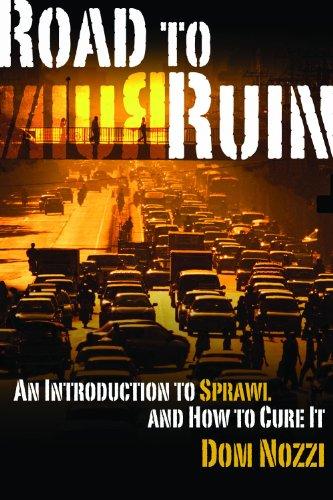
Road to ruin: an introduction to sprawl and how to cure it
by
Dom Nozzi
Published 15 Dec 2003
Free parking, on the other hand, is not taxed.22 An IRS rule that assigned an income value to what is now free parking would help encourage commuters to switch to noncar travel.The 20th Century was about getting around. The 21st Century will be about staying in a place worth staying in. —Jim Kunstler The most important task of the urbanist is controlling size. —David Mohney As sociology professor and planning consultant Ray Oldenburg points out in The Great Good Place: Cafes, Coffee Shops, Community Centers, Beauty Parlors, General Stores, Bars, Hangouts, and How They Get You Through the Day, segregation, isolation, compartmentalization, and sterilization seem to be today’s guiding principles for community growth and renewal.

Age of the City: Why Our Future Will Be Won or Lost Together
by
Ian Goldin
and
Tom Lee-Devlin
Published 21 Jun 2023
Optimists believe that, in contrast to the echo chambers of current social media platforms, the metaverse offers greater scope for bringing society together, thanks to its ability to forge connections across multiple contexts. People with starkly opposing political views, or from very different socioeconomic backgrounds, can find common ground in their shared enjoyment of the same video games or music, for instance. In this way, the metaverse may help to develop what sociologist Ray Oldenburg described as ‘third places’ – contexts outside of home and work – that bring people from different worlds together in a common community life.29 And, unlike the real world, space in the metaverse is infinite. Imagining life in the metaverse takes us squarely into the realm of science fiction.
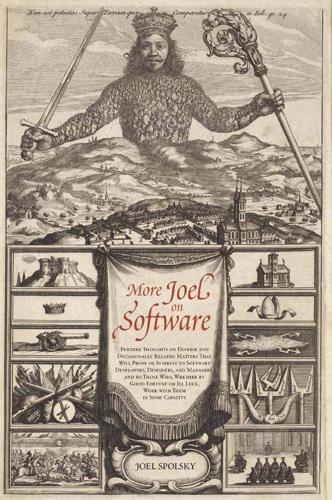
More Joel on Software
by
Joel Spolsky
Published 25 Jun 2008
And hopefully, we’ll figure out the new principles of social interface design. It’s going to be fascinating . . . as fun as user interface design was in the 1980s . . . so stay tuned. sixteen BUILDING COMMUNITIES WITH SOFTWARE Monday, March 3, 2003 In his book, The Great Good Place (Da Capo Press, 1999), social scientist Ray Oldenburg talks about how humans need a third place, besides work and home, to meet with friends, have a beer, discuss the events of the day, and enjoy some human interaction. Coffee shops, bars, hair salons, beer gardens, pool halls, clubs, and other hangouts are as vital as factories, schools, and apartments.
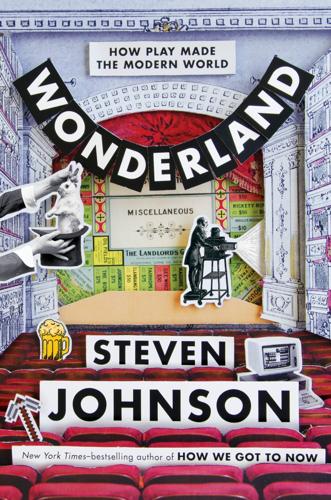
Wonderland: How Play Made the Modern World
by
Steven Johnson
Published 15 Nov 2016
For the first time, people began talking explicitly about the court of “public opinion”; they began to seek “publicity” for their work or ideas, a word that originates with the French publicité. Habermas argued that the political and intellectual revolutions of the eighteenth century had been facilitated by the creation of this new public sphere, largely housed in semipublic gathering places like taverns and pubs. (A few decades after Habermas, the American sociologist Ray Oldenburg would develop a similar thesis in a book called The Great Good Place—coining the now-common expression “the third place” for these venues.) For Habermas, the public sphere had a profoundly egalitarian bias, creating “a kind of social intercourse that, far from presupposing equality of status, disregarded status altogether.

Ghost Road: Beyond the Driverless Car
by
Anthony M. Townsend
Published 15 Jun 2020
98th Annual Meeting of the Transportation Research Board, November 14, 2018, https://usa.streetsblog.org/wp-content/uploads/sites/5/2019/01/19-04931-Transit-Trends.pdf. 215bus ridership declined 20 percent: Matt Tinoco, “Metro’s Declining Ridership Explained,” Curbed LA, August 29, 2017, https://la.curbed.com/2017/8/29/16219230/transit-metro-ridership-down-why. 215ride-hail’s sapping effect on bus ridership: Graehler et al., “Understanding the Recent Transit Ridership Decline.” 216driverless city buses underway in Edinburgh: “Edinburgh, UK,” Initiative on Cities and Autonomous Vehicles, accessed September 10, 2019, https://avsincities.bloomberg.org/global-atlas/europe/uk/edinburgh-uk. 216riders a high-tech experience: “Nobina and Scania Pioneer Full Length Autonomous Buses in Sweden,” Nobina, February 20, 2019, https://www.nobina.com/en/press/archive/nobina-and-scania-pioneer-full-length-autonomous-buses-in-sweden/. 216feature single-passenger self-driving pods: “Toyota Partnership to Pilot Autonomous Vehicle Transportation System,” Nikkei Asian Review, October 8, 2018, https://asia.nikkei.com/Business/Companies/Toyota-partnership-to-pilot-autonomous-vehicle-transportation-system. 216Combine Jelbi with a road-pricing platform: David Zipper, “Bikeshare, Scooters, Cars, Trains, Bridges: One Agency to Rule Them All,” CityLab, November 30, 2018, https://www.citylab.com/perspective/2018/11/transit-city-department-scootershare-ridehail-bikeshare/576982/. 217“the presence of an operator ensures”: “Principles for the Transit Workforce in Automated Vehicle Legislation and Regulation,” Transport Trades Department, March 11, 2019, https://ttd.org/policy/principles-for-the-transit-workforce-in-automated-vehicle-legislation-and-regulations/. 217“third space”: Ray Oldenburg, The Great Good Place: Coffee Shops, Bookstores, Bars, Hair Salons, and Other Hangouts at the Heart of a Community (Cambridge, MA: Da Capo Press, 2000), 20. 217“a half-dozen startups are testing”: Aarian Marshall, “Self-Driving Trucks Are Ready to Do Business in Texas,” Wired, August 6, 2019, https://www.wired.com/story/self-driving-trucks-ready-business-texas/. 217encouraging night delivery: Haag and Hu, “1.5 Million Packages a Day.” 217how much freight moves: Alain Bertaud, Order without Design: How Markets Shape Cities (Boston: MIT University Press, 2018), 30. 218road traffic in the developed world: Bertaud, Order without Design, 30. 218number of store trips they take by as much as half: Joann Muller, “One Big Thing: The Rise of Driverless Delivery,” Axios, November 28, 2018, https://www.axios.com/autonomous-vehicles-could-be-used-for-deliveries-3fb12a24-3e66-4d8b-b678-a2fbb47d05cb.html. 218more online shopping could empty them: For an excellent overview of trends and interacting issues, see Joe Cortright, “Does Cyber Monday Mean Delivery Gridlock Tuesday?”

The Impossible City: A Hong Kong Memoir
by
Karen Cheung
Published 15 Feb 2022
GO TO NOTE REFERENCE IN TEXT multiplying the late-night noise complaints: Karen Cheung, “In Hong Kong’s Increasingly Gentrified Western District, Residents Beg Bars for a Good Night’s Sleep,” Hong Kong Free Press, April 29, 2018, https://hongkongfp.com/2018/04/29/hong-kongs-increasingly-gentrified-western-district-residents-beg-bars-good-nights-sleep/. GO TO NOTE REFERENCE IN TEXT “I think Hong Kong people lack culture”: Lung Ying-tai and Andreas Walther, Dear Andreas (Taiwan: 天下雜誌, 2007). GO TO NOTE REFERENCE IN TEXT the concept of the third place: Ray Oldenburg, The Great Good Place: Cafés, Coffee Shops, Bookstores, Bars, Hair Salons, and Other Hangouts at the Heart of a Community (Boston: Da Capo Press, 1999). GO TO NOTE REFERENCE IN TEXT Daniel Lee and his two partners: “讀賣書人﹕序言書室 小眾交流 以書聚賢 [The Niche Discussions at Hong Kong Reader: Gathering Good People Through Books],” MingPao Canada, March 7, 2014, http://www.mingpaocanada.com/tor/htm/News/20140307/HK-gfk1_er.htm.

All Your Base Are Belong to Us: How Fifty Years of Video Games Conquered Pop Culture
by
Harold Goldberg
Published 5 Apr 2011
What he saw was groups of women having a raucous time, drinking, playing, and being social. The experience was totally unlike the bingo games on the Web at the time, primarily single-player affairs that made you refresh your browser each time you wanted a new bingo ball to drop. Kapulka, an avid reader and thinker, was concerned with what’s called the Third Place, which Ray Oldenburg, an urban sociologist, so succinctly espoused in his 1989 book, The Great Good Place. Kapulka thought, “You’ve got the home, work, and this public area where you socialize, a pub, a restaurant, a bingo hall. There’s a big difference between sitting in a bar drinking by yourself and sitting at home drinking by yourself, almost like the difference between aloneness and loneliness.”
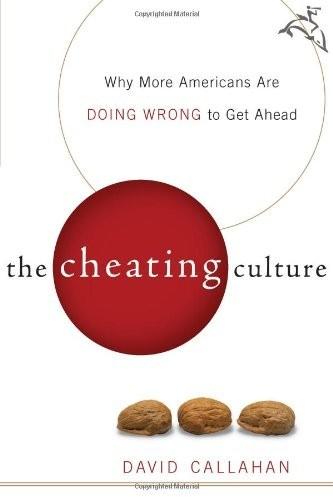
The Cheating Culture: Why More Americans Are Doing Wrong to Get Ahead
by
David Callahan
Published 1 Jan 2004
This section on sprawl and new urbanism draws heavily from David Callahan and Stephen Heintz, eds., Quality of Life 2000: The New Politics of Work and Community (New York: Demos, 2002), 77–118. Relevant essays in the book include Robert Liberty, "Is the American Dream Endless Sprawl?"; Philip Langdon, "New Development, Traditional Patterns"; "Growth: New Challenges and Opportunities in a New American Landscape—An Interagency Report by the Clinton/Gore Administration"; and Ray Oldenburg, "Our Vanishing 'Third Places.'" [back] 11. Robert Frank, Luxury Fever: Why Money Fails to Satisfy in an Age of Excess (New York: The Free Press, 1999), chapters 14–17. [back] 12. Carol Swain, New White Nationalism in America: Its Challenge to Integration (New York: Oxford University Press, 2002).

Pour Your Heart Into It: How Starbucks Built a Company One Cup at a Time
by
Howard Schultz
and
Dori Jones Yang
In America, we are in danger of losing the kind of casual social interaction that is part of the daily routine for many Europeans. In the 1990s, coffee bars became a central component of the American social scene in part because they fulfilled the need for a nonthreatening gathering spot, a “third place” outside of work and home. Ray Oldenburg, a Florida sociology professor, wrote most eloquently of this need in his book, The Great Good Place (1989). Oldenburg’s thesis is that people need informal public places where they can gather, put aside the concerns of work and home, relax, and talk. Germany’s beer gardens, England’s pubs, and French and Viennese cafés created this outlet in people’s lives, providing a neutral ground where all are equal and conversation is the main activity.
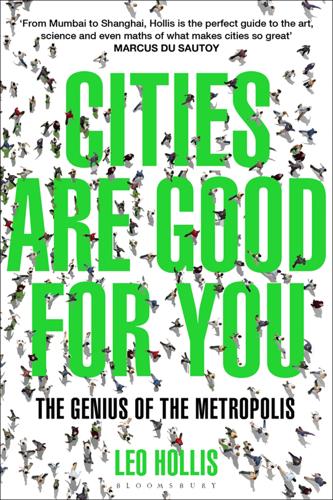
Cities Are Good for You: The Genius of the Metropolis
by
Leo Hollis
Published 31 Mar 2013
The only impediments are the will, the time and the places to plan and launch. In addition to the commons we need places to meet up, kick back and develop the brilliant schemes that will increase our shared enjoyment of the metropolis. The city is filled with such ‘third spaces’, places supercharged to reboot the community, if only we looked harder. As sociologist Ray Oldenburg explains: the café table on the Parisian street, the English pub, the Brooklyn coffee shop where you can sit by the window for the whole day, the secondhand bookshop that offers conversation as well as the unexpected volume, the barbershop where the hours of the day are marked with banter, the candy store at the corner of Jane Jacobs’s Hudson Street, the coffee houses of seventeenth-century Amsterdam where ideas circulated like money – these informal spaces are at the heart of the community; they are the incubators and the forcing ground of society.
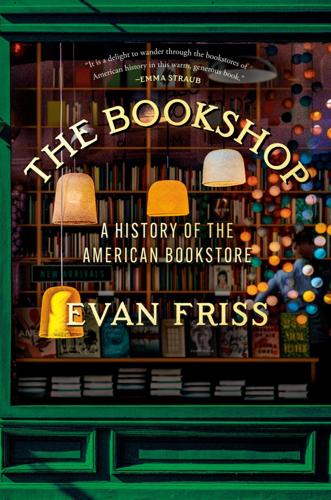
The Bookshop: A History of the American Bookstore
by
Evan Friss
Published 5 Aug 2024
Evans, and Jonathan Kelley, “Scholarly Culture: How Books in Adolescence Enhance Adult Literacy, Numeracy, and Technology Skills in 31 Societies,” Social Science Research 77 (January 2019): 1–15. GO TO NOTE REFERENCE IN TEXT Customers also make: For more on the concept of “third spaces,” see Ray Oldenburg, The Great Good Place: Cafés, Coffee Shops, Community Centers, Beauty Parlors, General Stores, Bars, Hangouts, and How They Get You through the Day (New York: Marlowe and Co., 1989). GO TO NOTE REFERENCE IN TEXT Three Lives has never: Jenny Feder, interview by the author, November 2022.